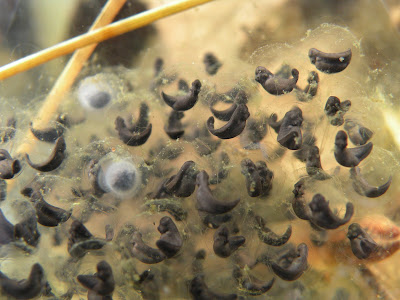Conservation update: Gopher frog head-starting

mid-stage development Gopher frog eggs
Well over 900 Gopher frog tadpoles are now hatched, feeding, and growing like weeds. A group of these will populate the upcoming Gopher frog exhibit in the Fuqua Orchid Center . The exhibit will allow guests a view of the actual subjects of our head-start project as they grow up. There will also be a view of the behind-the-scenes area where the project is conducted and informational signage will explain the project to visitors. We hope you come by to view the exhibit and learn about the Garden’s efforts to support this rare species. The exhibit should be ready for public view by late April 2011 .





